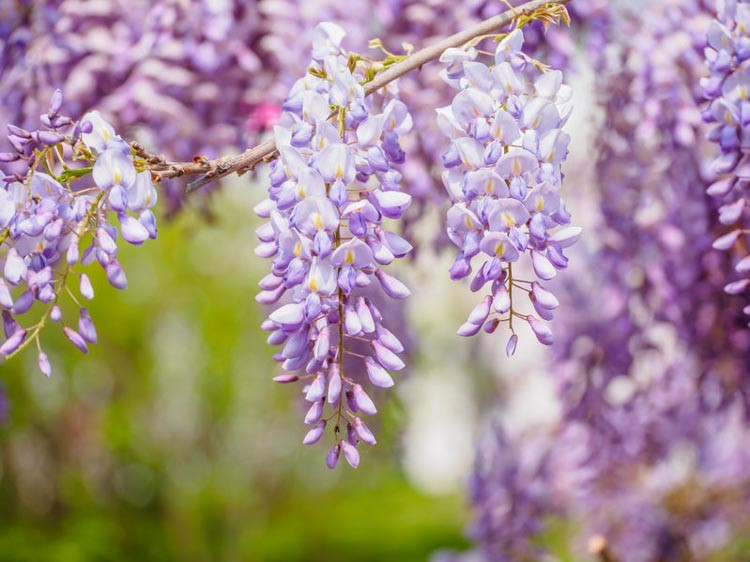Wisteria
Wisteria is a popular ornamental plant that never fails to produce a dramatic floral display. The plant belongs to the pea family (Fabaceae) and is native to Asia, particularly China, Korea, and Japan.
Plant: Wisteria is a woody, deciduous vine that can grow up to 30 feet (9 meters) long and spread up to 8-10 feet (2.4-3 meters) wide. It is commonly grown as a climbing vine but can also be trained into a tree form or used as a ground cover. This vine has a fast growth rate and can quickly become a dominant plant in the landscape.
Flowers: Wisteria flowers are one of the most stunning and recognizable blooms in the plant world. These flowers hang in long, pendulous clusters in shades of purple, lavender, pink, or white.
Fragrance: The flowers are highly fragrant and have a sweet, floral scent that can fill a garden or yard with their aroma.
Bloom time: The flowers bloom in spring or early summer and can last for several weeks, adding a beautiful touch to any landscape. The flower clusters can be so abundant that they can weigh down the plant's branches, creating a stunning cascade effect.
Pollinators: Wisteria attracts pollinators such as bees and butterflies.
Popular species: The most commonly grown are Chinese wisteria (Wisteria sinensis) and Japanese wisteria (Wisteria floribunda).
Uses: Wisteria is a versatile plant that can be used in a variety of landscape settings. It is often grown on trellises, arbors, or pergolas to create a beautiful and fragrant outdoor living space. This striking vine can also be used to cover unsightly structures such as fences or walls or to add height to a garden bed. In addition to its ornamental value, it has also been used in traditional Chinese medicine for its purported health benefits.
Symbol: In Japan, it is a symbol of love and is often featured in art and literature. The plant has a rich cultural history and is often associated with the elegance and beauty of Asian gardens.

